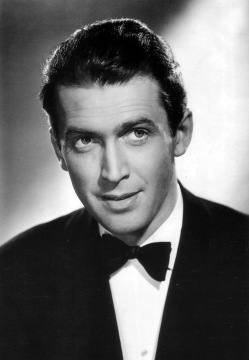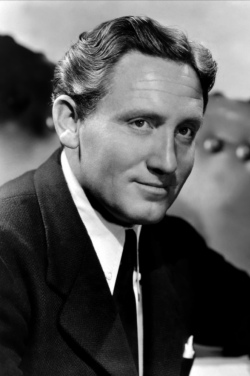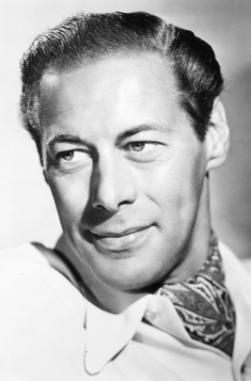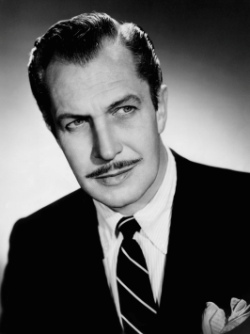 Basil Rathbone starred as Sherlock Holmes in 14 films, with Nigel Bruce as a blustering, foolish Doctor Watson. When I watched these as a child—broadcast one each week by a local TV station—I treated them like a TV show, with all of the movies being approximately the same. They aren’t.
Basil Rathbone starred as Sherlock Holmes in 14 films, with Nigel Bruce as a blustering, foolish Doctor Watson. When I watched these as a child—broadcast one each week by a local TV station—I treated them like a TV show, with all of the movies being approximately the same. They aren’t.
The first two were made for 20th Century Fox with a reasonable budget. Then Universal pictures took over, shrinking the budget and updating the story to 1940s wartime. Stopping Nazis was the goal and Holmes was more spy than detective. As the war wound down, the films took on more of a Gothic feeling, with crumbling castles and frightened peasants. The setting was still “current” times, but with locations in Scottish villages and cutoff manor houses to decrease the effects of modern technology. A few were standard mystery films (no Gothic mansions), but while the 1940s were more visible than in the more Gothic ones, these mystery films could have been transported to the 1880s with few changes.
Ranking the Rathbone/Holmes films is pretty straightforward. The Fox films are best, followed by the Gothic Universals. Standard mysteries slot in next, with the later films (where Rathbone was tired of playing the role—and being quite vocal about it) and the spy films vie for worst. Starting with the best:
#1. The Hound Of The Baskervilles (1939) — The first of the Fox films and the most famous Holmes tale. Rathbone never had a chance to stretch as much again. This Holmes has a sense of humor. (My review)
#2. The Adventures Of Sherlock Holmes (1939) — The second Fox film and the last one set in the proper decade. This is the defining Sherlock Holmes movie. George Zucco, one of the great character actors, takes a turn as Moriarty.
#3. The House Of Fear (1945) — This one is fully Gothic and all the better for it. At a seaside estate, the members of a club are being murdered one by one after receiving an envelope containing orange seeds. It feels nearly like a horror movie, which is a genre Universal was skilled with. (My review)
#4. Sherlock Holmes Faces Death (1943) — The first of the Gothic films, breaking away from the three propaganda ones before it. It is a dark house mystery, with Holmes trying to find the murderer of the head of a rich and old family among the strange characters staying at the house. (My review)
#5. The Scarlet Claw (1944) — Holmes verses a supposed marsh monster in Canada. The setting is a strangely isolated (since it is 12 miles form a major city), tiny village cloaked in fog and surrounded by marshland. The superstitious dread of the people gives it a nice tone, but side characters (and villain) lack needed personality.
#6. Terror By Night (1946) — Holmes plays in Agatha Christie’s realm as he investigates a murder on a train. The train car is filled with a number of unusual characters, any one of whom might be the killer.
#7. The Pearl Of Death (1944) — Another criminal mastermind is in London along with his massive brute of a killer. He stole a pearl but had to hide it. Holmes races to find it, deducing that a series of murders is related. This is one of the standard mystery films.
#8. The Spider Woman (1944) — Important men are being driven to suicide for their insurance. Holmes knows the villain is a woman since it is a cruel and controlling crime. Yeah, Holmes being sexist isn’t a shocker. Gale Sondergaard is a lot of fun as the Spider Woman, but the story is weak.
#9. Sherlock Holmes And The Secret Weapon (1942) — Holmes must stop a bomb site from falling into Nazi hands. It’s WWII spies again, but at least with a mystery. Moriarity (this time played by the always reliable Lionel Atwill) feels like an odd villain to drop into this war pic that would have been better served by a SS officer.
#10. Dressed To Kill (1946) — The final film has criminals missing the auction of three music boxes that contain a musical code, so Holmes races to find them first. The mystery is both overly simple and unsolvable for the audience, but if feels like a good old Holmes and Watson case and Patricia Morison makes a memorable villain.
#11. Pursuit To Algiers (1945) — This 12th entry takes us back to spies. Holmes acts as escort (wouldn’t a few armed guards be better for that purpose?) for the heir to the throne of Rovinia. It’s a fun film, but isn’t a Holmes film—it feels more like something by Agatha Christie. There’s a group of peculiar characters with secrets, cut off from the outside (this time on a ship), and the constant threat of murder. I like it, but would like it better without Holmes.
#12. The Woman In Green (1945) — Young women are being gruesomely murdered around town and Holmes disagrees with Scotland Yard that it is the work of a madman. He knows it to be Moriarty, this time played by Henry Daniell. This is one of the normal “case” type films, though a bit darker, but it doesn’t come together very well.
#13. Sherlock Holmes In Washington (1943) — Not a mystery at all, but a spy caper where everything is known. It feels like an old time serial, with shootouts and secret lairs as Holmes must retrieve a secret document and rescue a girl from evil Nazi agents. It’s nice to see both George Zucco and Henry Daniell as villains (neither playing Moriarty as they both did in other films), though neither have much to do.
#14. Sherlock Holmes And The Voice Of Terror (1942) — The first and the most over-the-top of the WWII spy films has our hero trying to stop a stream of disasters that are first predicted in a Nazi radio broadcast. It ends with Holmes giving a propaganda speech that would have been too much even in 1942.

 Stewart had a more varied career than most actors and far more than most leading men of the golden age. He not only was in, but was known for, comedies, dramas, melodramas, family films, romances, thrillers, and Westerns. Early in his career, he was in a string of sentimental Frank Capra movies, with It’s A Wonderful Life being the most famous. I’m not a fan of these as they tend to go over the top with shmaltz, letting both real human interaction and humor die for the sake of sentimentality. The worst offender is You Can’t Take It with You, a wonderful play that is gutted by Capra. Luckily, Stewart had other moments, with strong turns in comedies before becoming one of Hitchcock’s two favorites (
Stewart had a more varied career than most actors and far more than most leading men of the golden age. He not only was in, but was known for, comedies, dramas, melodramas, family films, romances, thrillers, and Westerns. Early in his career, he was in a string of sentimental Frank Capra movies, with It’s A Wonderful Life being the most famous. I’m not a fan of these as they tend to go over the top with shmaltz, letting both real human interaction and humor die for the sake of sentimentality. The worst offender is You Can’t Take It with You, a wonderful play that is gutted by Capra. Luckily, Stewart had other moments, with strong turns in comedies before becoming one of Hitchcock’s two favorites ( Some lists are hard. Some are easy. And some are pretty much repeats. This one is a
Some lists are hard. Some are easy. And some are pretty much repeats. This one is a 
 With his no-nonsense, man’s man persona and natural style, Spencer Tracy was successful in both dramas and comedies. Although he was an alcoholic, he was known for his professionalism. It was with that understanding of addiction that he helped a broken Montgomery Clift give his great performance in Judgment at Nuremberg.
With his no-nonsense, man’s man persona and natural style, Spencer Tracy was successful in both dramas and comedies. Although he was an alcoholic, he was known for his professionalism. It was with that understanding of addiction that he helped a broken Montgomery Clift give his great performance in Judgment at Nuremberg.


 I think of Rex Harrison as one of the great actors, yet “great” is not a word I use with his most famous films. Doctor Dolittle, Anna and the King of Siam, The Agony and the Ecstasy, The Yellow Rolls-Royce, and Cleopatra are all fine, watchable flicks, but no masterpieces, and I normally don’t even call them good without some kind of qualification. (My Fair Lady is a level up, but I still qualify any compliments I give it.)
I think of Rex Harrison as one of the great actors, yet “great” is not a word I use with his most famous films. Doctor Dolittle, Anna and the King of Siam, The Agony and the Ecstasy, The Yellow Rolls-Royce, and Cleopatra are all fine, watchable flicks, but no masterpieces, and I normally don’t even call them good without some kind of qualification. (My Fair Lady is a level up, but I still qualify any compliments I give it.) Edward G. Robinson was one of the kings of early gangster cinema (along with Jimmy Cagney, George Raft, and their second banana, Humphrey Bogart).Things changed in a decade, with old-style crime movies fading, replaced by war movies and
Edward G. Robinson was one of the kings of early gangster cinema (along with Jimmy Cagney, George Raft, and their second banana, Humphrey Bogart).Things changed in a decade, with old-style crime movies fading, replaced by war movies and  The 4th of the Big Three horror icons (of sound films), like Karloff before him, Vincent Price had a liquid-jeweled voice and range. Price’s early work was more often in
The 4th of the Big Three horror icons (of sound films), like Karloff before him, Vincent Price had a liquid-jeweled voice and range. Price’s early work was more often in